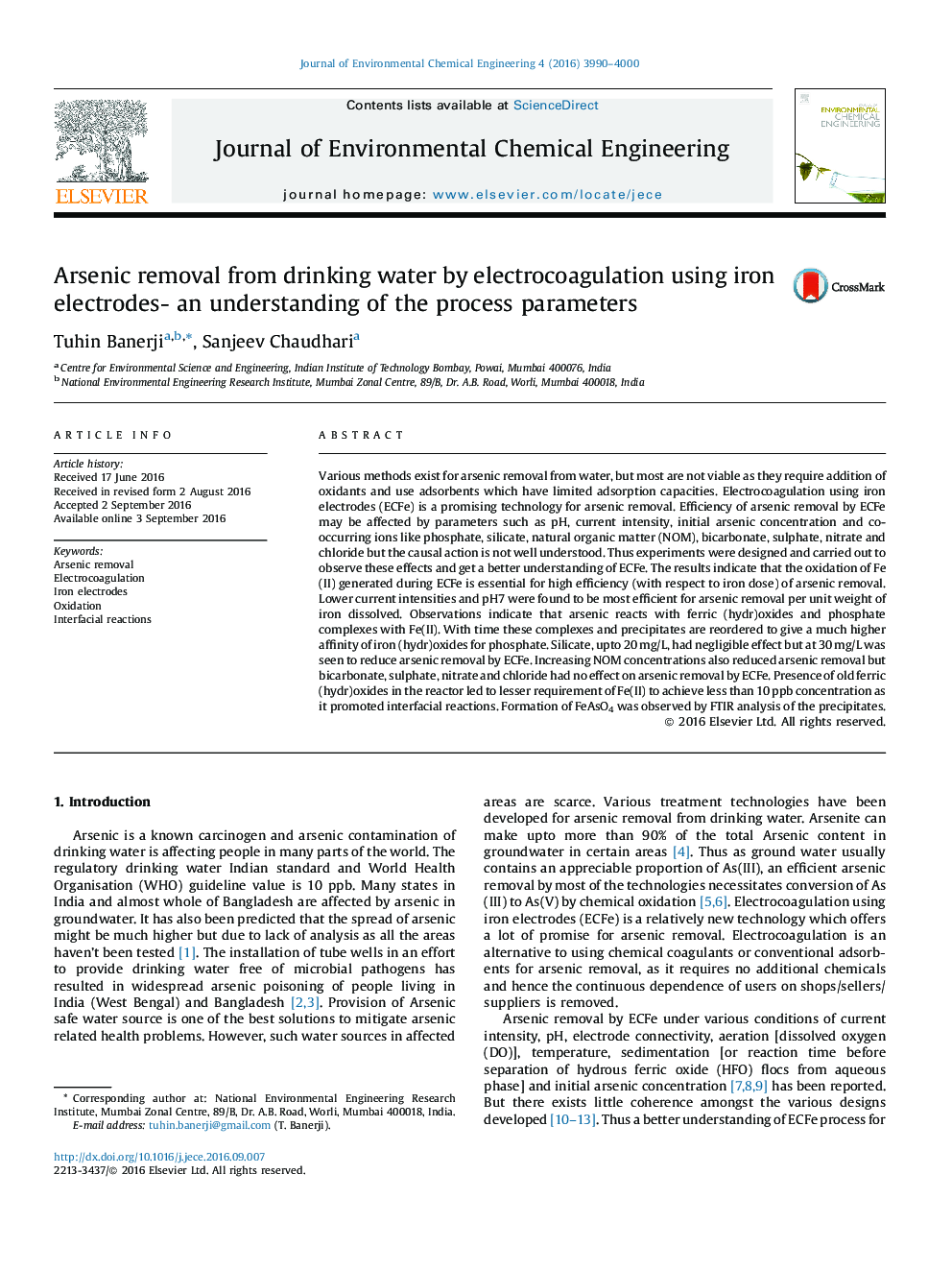| کد مقاله | کد نشریه | سال انتشار | مقاله انگلیسی | نسخه تمام متن |
|---|---|---|---|---|
| 4908573 | 1362581 | 2016 | 11 صفحه PDF | دانلود رایگان |
عنوان انگلیسی مقاله ISI
Arsenic removal from drinking water by electrocoagulation using iron electrodes- an understanding of the process parameters
ترجمه فارسی عنوان
حذف آرسنیک از آب آشامیدنی توسط الکتروکواگولاسیون با استفاده از الکترودهای آهن - درک پارامترهای فرآیند
دانلود مقاله + سفارش ترجمه
دانلود مقاله ISI انگلیسی
رایگان برای ایرانیان
کلمات کلیدی
حذف آرسنیک، الکترو کلاژن، الکترودهای آهن، اکسیداسیون، واکنشهای متقابل،
موضوعات مرتبط
مهندسی و علوم پایه
مهندسی شیمی
مهندسی شیمی (عمومی)
چکیده انگلیسی
Various methods exist for arsenic removal from water, but most are not viable as they require addition of oxidants and use adsorbents which have limited adsorption capacities. Electrocoagulation using iron electrodes (ECFe) is a promising technology for arsenic removal. Efficiency of arsenic removal by ECFe may be affected by parameters such as pH, current intensity, initial arsenic concentration and co-occurring ions like phosphate, silicate, natural organic matter (NOM), bicarbonate, sulphate, nitrate and chloride but the causal action is not well understood. Thus experiments were designed and carried out to observe these effects and get a better understanding of ECFe. The results indicate that the oxidation of Fe(II) generated during ECFe is essential for high efficiency (with respect to iron dose) of arsenic removal. Lower current intensities and pH7 were found to be most efficient for arsenic removal per unit weight of iron dissolved. Observations indicate that arsenic reacts with ferric (hydr)oxides and phosphate complexes with Fe(II). With time these complexes and precipitates are reordered to give a much higher affinity of iron (hydr)oxides for phosphate. Silicate, upto 20Â mg/L, had negligible effect but at 30Â mg/L was seen to reduce arsenic removal by ECFe. Increasing NOM concentrations also reduced arsenic removal but bicarbonate, sulphate, nitrate and chloride had no effect on arsenic removal by ECFe. Presence of old ferric (hydr)oxides in the reactor led to lesser requirement of Fe(II) to achieve less than 10Â ppb concentration as it promoted interfacial reactions. Formation of FeAsO4 was observed by FTIR analysis of the precipitates.
ناشر
Database: Elsevier - ScienceDirect (ساینس دایرکت)
Journal: Journal of Environmental Chemical Engineering - Volume 4, Issue 4, Part A, December 2016, Pages 3990-4000
Journal: Journal of Environmental Chemical Engineering - Volume 4, Issue 4, Part A, December 2016, Pages 3990-4000
نویسندگان
Tuhin Banerji, Sanjeev Chaudhari,
